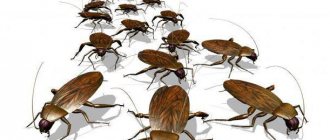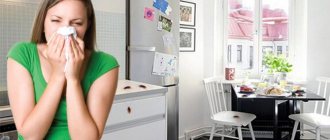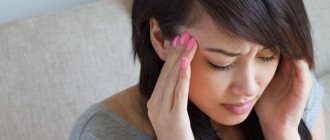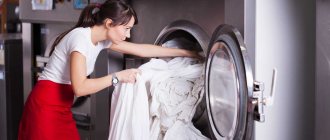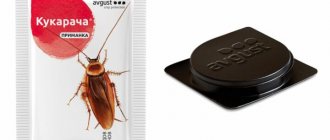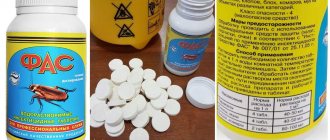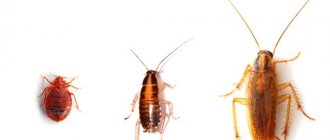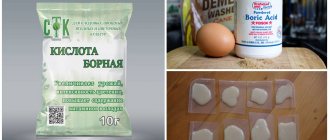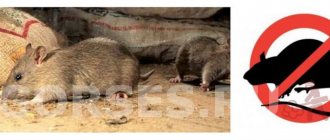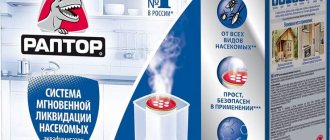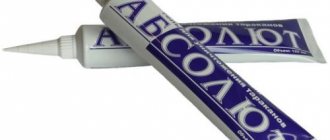What precedes cleaning
After spraying the drug, the room was closed for several hours. The first thing after a person enters the apartment is to open all the windows as much as possible or set them for ventilation (depending on the time of year). It is advisable to provide a draft so that chemical residues and smells disappear. In summer, ventilate for 2 hours or more, in winter – 45-60 minutes. These are necessary precautions. Modern products have virtually no odor, do not leave streaks or stains on walls, upholstered furniture, or household items.
You cannot carry out general cleaning including washing walls, all pieces of furniture, and hard-to-reach places. Medicines for cockroaches, bedbugs, and ants have a prolonged effect. This is designed to kill any insects that were not killed immediately after treatment. Over time, adult individuals crawl out of their shelters in search of water and food, come into contact with the remains of the poison on the surface and gradually die out. The residual activity of the drugs is at least 3 weeks. This action prevents insects from recolonizing, migrating, and reproducing.
After thorough ventilation, children, the elderly, people with chronic heart and lung diseases, and pets can enter the apartment. If insecticide particles remain in the air, their concentration is minimal and does not affect human well-being. The solution dries on surfaces, does not penetrate the bloodstream upon contact with skin, and does not pose a health hazard.
What to do immediately after disinfestation in the apartment
There is no need to do anything immediately after disinfection measures: just open the windows wide open and go for a walk for 1-2 hours. Cleaning after disinfestation of cockroaches and other parasites is carried out only after thorough ventilation. Otherwise, there is a high probability of chemical poisoning through the respiratory tract.
After ventilating the premises with a through air flow - do not forget, you need to ventilate all rooms, including the kitchen and bathrooms - you can begin cleaning. On the first day it is advisable to:
- vacuum or sweep away the bodies of dead insects along with the eggs;
- if you did dry vacuuming, change the dust bag;
- wipe the surfaces with which you most often come into contact - tables, kitchen countertops, etc. – a disinfectant solution of soda and soap foam;
- wash the dishes if you did not put them in an airtight storage;
- wash or rinse clothes and underwear;
- If food or drinks remain freely available, throw them away: they are unsuitable for food.
It is recommended to start general cleaning after disinfection no earlier than 6-7 days after treatment. It is necessary to pause to give the rare surviving insects the opportunity to get to the surface and try to lay eggs. Even in dry form, the insecticide is fatal to parasites: if they come into contact with the dried layer of poison, they will soon die.
Basic rules for surface cleaning
If possible, keep wet cleaning after disinsection to a minimum. Floor coverings (parquet, laminate, linoleum, tiles) can be vacuumed and swept. If you need to wash the floor, wipe the central part of the room. Do not wipe the perimeter of the room along the baseboard with a damp cloth (no closer than 10-15 cm to the wall). It is unacceptable to wash the baseboards themselves. The longer the insecticide lasts, the more effective the treatment is. One time will be enough without repeated disinfestation. Do not touch the floor under the closet, sofa, chairs, bed.
Items in the house that need to be wiped with warm soapy water and clean water (in direct contact with humans):
- the surface of the dining table, chairs, stools, bedside tables, open shelves, niches, window sills;
- plumbing – taps, sinks, bathtub, toilet, cistern;
- handles on doors, cabinets, windows.
How to prepare a solution for wet cleaning after treating bedbugs and cockroaches: baking soda (50 g), laundry soap (30 g) per bucket of water (10 l).
It is permissible to carry out wet cleaning in the children's room, in those places where the child plays or where he can climb. If there are indoor plants left in the apartment during treatment, they need to be washed in the shower so that the water does not drain into the ground.
What means do exterminators use to poison cockroaches?
As noted above, exterminators carry out the main treatment of the apartment with aerosol insecticides. The beauty of these drugs is that they enter the most inaccessible places with the air, where they actively poison cockroaches. This allows you to destroy the bulk of the insect population (sometimes the entire population) in just a few hours.
Sinuzan, Avicin, Averfos, Xulat, Tetrix, Solfak, Forssyth and others are used as such insecticides. These are concentrates. Many of them are approved for use only by specialists, and therefore are sold in large packages of a liter or more.
Working solutions are prepared from concentrates.
Different methods are used to spray the solution in an apartment:
- Spraying with a conventional sprayer is the simplest, but low-productivity method of spraying; it requires painstaking spraying of all surfaces, crevices and possible hiding places for cockroaches;
- Treatment of a room with cold fog - in this case, the solution is dispersed in an electric fog generator to the state of a thin aerosol, which is then removed from the apparatus under pressure. Mixing with air, the aerosol easily penetrates into various cracks, holes, and spaces behind furniture;
- Hot fog treatment is fundamentally similar to the previous method, but in the hot fog generator the aerosol is also heated. Due to this, it has a smaller particle size, stays in suspension longer without settling on surfaces, and, as a result, penetrates into even deeper and more difficult-to-reach shelters of cockroaches. However, it should be noted that hot fog generators are rarely used in small apartments. This powerful equipment is better suited for disinfestation at large industrial facilities.
After such treatment, in those places through which cockroaches can enter the apartment from neighboring rooms, the exterminator usually either pours insecticidal powder (in common parlance - dust) or installs bait houses. A gel can be applied here, or a glue trap can be installed, depending on what the specialist considers more rational.
If a warranty case occurs (that is, cockroaches reappear after disinfestation), the specialist can use the same methods when re-processing. In practice, conscientious services do not guarantee the absence of cockroaches in cases where it is obvious that these pests en masse and freely enter the apartment from neighbors.
The importance of cleaning the kitchen
The effectiveness of the entire pest control operation depends on proper cleaning of the kitchen, the main breeding ground for cockroaches. This room is treated especially carefully, if necessary with a solution of higher concentration. To ensure that your food is safe to eat, you need to properly remove any remaining chemicals.
Before pickling, all food items are removed from the kitchen and dining room. If by chance there are open or closed packages left in the cabinets, they are not suitable for consumption. Such products are collected in plastic bags, tightly sealed and thrown into the trash.
To avoid future poisoning, cleaning the kitchen involves more than just wiping down work surfaces. The interior walls and shelves of cabinets, bedside tables, and handles of household appliances (refrigerator, microwave oven) must be washed. Wipe the inner chamber of the oven and induction cooker panels. All dishes are washed in the dishwasher or by hand in the sink. After the cabinets have dried, you can put the food in its place.
What not to touch:
- skirting boards, radiators, radiators;
- tiled walls, tiles;
- the upper part of the refrigerator body, wall cabinets;
- window frame, glass taller than a person, cornices;
- hood, gas boiler, water heater (boiler);
- sockets, household appliance cables, adapters;
- water supply units (pipes, sewerage);
- waste collection place (tank, bucket);
- door frame, lighting fixtures.
What to do with upholstered furniture
One of the first questions clients ask is whether the furniture will remain usable after disinfestation. The main concerns are stains on the fabric and the negative impact of the ingrained chemical on the body. People express concerns that inhaling toxic fumes will cause headaches, dizziness, insomnia, breathing problems, and allergic reactions.
Such thinking is misleading. The production of drugs is strictly regulated by international standards on the use of hazardous substances. This guarantees the safety of the products used to remove insects from the home.
During the first 24 hours, with poor ventilation, solution particles remain in the air. Moreover, their concentration is negligible and not dangerous to humans. The aerosol deposited on the fabric dries quickly. Upon contact with skin, it is absolutely harmless, but remains active against bedbugs.
The product is not released back from the fabric. A person sleeping on a treated sofa or bed does not inhale insecticide vapors, while being reliably protected from blood-sucking insects. Upon contact with the drug, adult individuals become infected and die.
Dry cleaning is not necessary for the upholstery of a sofa or mattress. Before spraying the emulsion, furniture can be covered with covers, blankets or sheets. After processing, wash them in a machine. Before going to bed at night, make the bed with clean linen. These rules apply to cribs.
Cleaning clothes and children's toys
To simplify cleaning after disinfection against cockroaches, put the clothes in a closet before staining. This way the pesticide won't get on it. Wooden furniture in the bedroom and dressing room is processed extremely rarely, in the presence of massive populations of insects and larvae.
If the clothes were in an open space, they are washed in a machine or under running water. Fabric backpacks and bags are washable. Leather items can be wiped with a damp cloth, but you don’t have to touch them at all.
Apartment cleaning measures include disinfecting toys. Plastic products may react with chemical agents and are difficult to clean. Also, bedbugs and cockroaches do not live in them. Therefore, before disinfestation, such toys are packed in bags and left untouched. Soft toys are washed in a washing machine and dried in the fresh air.
When did the poisoning happen?
The risk of poisoning from chemicals designed for residential use is minimal. Theoretically, this cannot be ruled out. The risk group includes elderly people with severe chronic pathologies of the kidneys, heart, immune system, and metabolic disorders. The triggering factor is insufficient ventilation of the apartment and failure to follow cleaning recommendations.
Symptoms of poisoning from inhalation of insecticide:
- headaches, dizziness;
- general weakness;
- nausea, bitterness in the mouth;
- sore throat, dry suffocating cough;
- irritation, redness of the mucous membranes of the nasopharynx and eyes;
- runny nose, watery eyes, drooling.
If one or more signs occur, you need to leave the room and go outside. Within 15-20 minutes the condition should improve. If signs of poisoning increase, consult a doctor. If you experience shortness of breath or difficulty breathing, immediately call an ambulance.
Small pets - rodents (hamsters, chinchillas, house mice, rats), amphibians (turtles, chameleons) can be sensitive to chemicals. After disinsection, these animals are brought into the house in cages or terrariums and are not released. They can be picked up, but not released onto the floor, only after general cleaning (no earlier than 3-4 weeks).
Insecticides are not dangerous for large animals, dogs, cats, rabbits. Even if an animal licks a little of the dried drug, this will not affect its health. For a cat to get poisoned, it needs to lick 4-5 m2 of the treated surface, which is actually impossible.
When can you ventilate your apartment after treatment for bedbugs and cockroaches?
Ventilation is carried out after maintaining the period during which the drug settles on the surface. This is about 3-4 hours for cold fog, and at least 6-7 hours for hot fog. After spraying the drug, the room is sealed: you can only be in full protective equipment and breathing masks - respirators.
Primary ventilation makes the apartment safe. Although the insecticide still covers the surfaces, after ventilation, people and pets are freely allowed into the room; You can open the aquarium and bring in plants. Only the wet insecticide, which saturates the air during the disinfestation process, is dangerous to humans. The dried layer of the drug, diluted in a large amount of water, has a low concentration: lethal to insects, harmless to people.
The recommended ventilation time depends on the season of treatment:
- in the cold season, the atmosphere in the room is completely renewed in an hour;
- in summer, late spring, leave the rooms to ventilate for 2-3 hours: warm air moves more slowly, there is less wind.
To allow air to circulate freely, leave doors and windows open (except the front door), and remove the ventilation damper. Make sure all areas are open, including the bathroom, pantry and kitchen. While the apartment is being ventilated, the air remains toxic, so you shouldn’t sit at home: it’s better to go outside or visit.
Advantages of professional cleaning after disinfestation
If you doubt that you can handle the cleaning yourself after treatment for cockroaches, order a cleaning service from a company that carries out pest control.
Advantages of comprehensive service from professionals:
- knowledge of the rules for cleaning after treatment with insecticides, which guarantees safety;
- compliance with safety precautions when working with chemicals, which prevents poisoning among residents;
- availability of the necessary personal protective equipment, you do not have to additionally buy rubber gloves, detergents, rags;
- quickly bringing the apartment into a habitable condition, which saves your time;
- modern cleaning technologies, efficiency, quality;
- control system, guarantee for work performed.
If necessary, you can order additional services - eliminating unpleasant odors, cleaning surfaces, tiles from limescale, fungus, rust, water stone. For this purpose, innovative techniques and equipment are used - steam cleaner, dry fog.
What is included in cleaning an apartment after disinfestation?
Cleaning after disinfestation is carried out to make the premises safe and pleasant to stay in. Basic cleaning includes services:
- Dry cleaning of surfaces. After applying the insecticide, the apartment is filled with dead insect bodies. Cleaning up after treatment for cockroaches, bedbugs or other pests that multiply rapidly reveals astonishing volumes of chitinous debris, even in cases where it seemed that there were few insects in the house. The pest control service will collect the dead bodies with a vacuum cleaner, along with half-living larvae and eggs. Places that are inconvenient to vacuum clean are cleaned manually.
- Wet cleaning. It is not carried out on all surfaces, but only on the most important ones - where you will store dishes, work or eat food. If there are small children in the house and they like to play on the floor without carpet, you can wipe the floors at the same time. For deep cleaning, surfaces are covered with a soap solution, then treated with a steam generator.
- Cleaning radiator grilles, split systems, lighting fixtures. As on open surfaces, after chemical treatment they become clogged with the bodies of dead insects.
- Cleaning the kitchen, bathroom and toilet. Cleaning the apartment after treatment for bedbugs and other pests includes mandatory cleaning of the kitchen and bathrooms. Even if the insects were nesting in other rooms, during chemical disinfestation they will rush into the vacant rooms in search of protection. After dry cleaning, surfaces are disinfected.
- Taking out the trash. Professional pest control leaves behind a lot of garbage; Even more of it is formed if the rooms were not thoroughly cleaned before spraying the drug. Upon completion of the work, our employees will remove everything unnecessary: return to a clean, insect-free home.
At the customer's request, cleaning after disinfestation may include additional services for an additional fee. This includes washing ceilings and windows, washing dishes with a special solution, dry cleaning carpet, furniture, etc.
However, we do not recommend deep cleaning in the first 1-2 weeks after spraying the insecticide . A dried layer of the drug on hard-to-reach surfaces, in furniture filler or carpet pile acts as a toxic chemical barrier against surviving insects.

